Shotgun Honey, the flash crime fiction site always comes through when looking for inventive tales of crime and murder. It recently showcased this experimental story from Matthew Iden featuring a bullet who explains himself to his victim.
Shotgun Honey, the flash crime fiction site always comes through when looking for inventive tales of crime and murder. It recently showcased this experimental story from Matthew Iden featuring a bullet who explains himself to his victim.
If not integral to classic crime fiction, jazz at least has a strong relationship to the genre. Whether it be a mob-owned club or evidence of how hip the detective is, jazz is the primary background music to the writing. My own love of the music can be traced to my love of jazz. Because of this, I was intrigued about Stark House reprinting Angel’s Flight, a noir novel that covers the thirty years when jazz was the music of America.
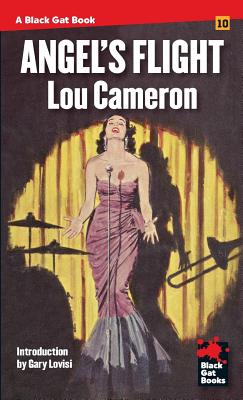 The book follows the feud between two musicians. Ben Harper plays bass for Daddy Holloway and his Hot Babies, an integrated band led by a genius behind the piano. He butts heads with Johnny Angel, an ambitious kid living with their gay drummer for lessons. Angel finagles his way into the band and through stealing the daughter of Big Daddy’s heart, steals the band. Ben fights him as they both rise in the industry, until World War Two takes him overseas.
The book follows the feud between two musicians. Ben Harper plays bass for Daddy Holloway and his Hot Babies, an integrated band led by a genius behind the piano. He butts heads with Johnny Angel, an ambitious kid living with their gay drummer for lessons. Angel finagles his way into the band and through stealing the daughter of Big Daddy’s heart, steals the band. Ben fights him as they both rise in the industry, until World War Two takes him overseas.
After the war things escalate. Ben finds himself in Hollywood helping score a film so Angel doesn’t take the work away from a friend. This leads to his discovering a red-headed beauty with a killer voice, causing yet another battle between him and Johnny. After a nightmare USO tour in Korea, Ben gets leverage on a “dirty” record producer who gypped him and starts his own company that competes with a larger one owned by Johnny Angel. This leads to final fight involving a senate investigation and murder, coming full circle with poetic noir irony.
Lou Cameron tells the story with the pace and style of a good Benny Goodman number. It covers three decades non-stop under three hundred pages. It is dense and tight. The jazz lingo gives it style, a subtle dark romanticism circles around the story like a breezy horn section, with a cutting cynicism serving as percussion. As it keeps moving, Cameron’s style becomes a major part of the story.
Cameron fills the tale in with detail. We get the drudgery of life on the road, the business of making dirty records and the dirtier business of payola that leads Ben to go up against the the mob and Angel. He also explores the race and sexuality in the scene as well as is other denizens. His definition of a hipster is worth the price alone.
Angel’s Flight gives us a rough and tumble tour through the jazz subculture at it’s peak, carrying the fate of two men, one foolish enough to think he can control it. Cameron plays it with style but with little nostalgia. He gives us an an art and business that can take the lives that exist in it and even worse, their souls.
The American West has returned as a hot spot for crime fiction. Revived by the likes of Craig Johnson and C.J. Box, sheriffs now square off with meth dealers instead of train robbers, instead of the cavalry, Indians fight crime and politics of the reservation, and a game warden can become an unlikely hero, fusing modern crime fiction with the classic western. David Corbett swaggers into this territory with the fresh and inventive The Long-Lost Love Letters of Doc Holliday.Join us this evening, August 27th, at 7pm to hear Corbett speak about the book.
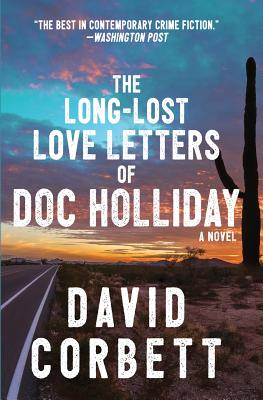 He gives us a unique protagonist in Tuck Mercer, a former rodeo rider and western art forger who became a western artifact appraiser after a stint in prison. The man is Sam Elliot with a touch of slick salesman thrown in. His time for a big payoff occurs when he comes into possession of the correspondences between the infamous gunfighter Doc Holliday and his sweetheart Mattie. He enlists Lisa Ballermo, and arts attorney with a crush on him, to sell them. News of the letters comes to a shady judge who will do anything to get his hands on them, including the use of a local militia group. Soon there is enough gunfire to give Tombstone in the 1880s a run for its money.
He gives us a unique protagonist in Tuck Mercer, a former rodeo rider and western art forger who became a western artifact appraiser after a stint in prison. The man is Sam Elliot with a touch of slick salesman thrown in. His time for a big payoff occurs when he comes into possession of the correspondences between the infamous gunfighter Doc Holliday and his sweetheart Mattie. He enlists Lisa Ballermo, and arts attorney with a crush on him, to sell them. News of the letters comes to a shady judge who will do anything to get his hands on them, including the use of a local militia group. Soon there is enough gunfire to give Tombstone in the 1880s a run for its money.
Corbett studies several facets of the west. Tuck and Maria have to maneuver through the neuvo-rich who both live and profit from cowboy fantasies, as they search for a buyer. They also encounter the sons of the pioneers who have lived there for generations living the values the history has instilled in them. Others have twisted those values like other terrorists have done with the Qur’an, and turned them into something xenophobic and bullying. He frames all of it by weaving in the correspondences between Doc and Mattie, creating an elegant counterpoint of the old west to the raucous new one.
The Long Lost Love Letters of Doc Holliday uses it’s story and characters to paint a vivid landscape of the American west. Corbett melds action thriller, courtroom drama, and Elmore Leonard-style crime novel to explore the territory that defines our culture and how we define it with legend, lore, and fact colliding together. Thank God a literary prospector like David Corbett was the one to come along and mine it.
The Long-Lost Love Letters Of Doc Holliday may be the most fun novel author David Corbett has written. New and old west converge when the supposedly destroyed romantic correspondences between gunfighter and his first cousin Mattie fall into the hands of former rodeo cowboy and art forger turned western artifact appraiser Tuck Mercer and his arts lawyer Lisa Balamaro, putting a shady judge and a militia group with their own agenda for the letters after them. David is one of the smartest authors I know, so I hope you can catch him when he discusses and signs the novel on August 27th at BookPeople. Here is some idea of what you’re in for.
 MysteryPeople Scott: Even for you this is a very different crime novel, how did it come about?
MysteryPeople Scott: Even for you this is a very different crime novel, how did it come about?
David Corbett: I love that “even for you.” Yes, I suffer from Ross Thomas Syndrome. I am congenitally incapable of writing the same book twice.
I’ve had a fascination with Doc Holliday since childhood. That said, I can’t pinpoint exactly where that fascination began.
I’m old enough to remember watching the early 1960s TV Series The Life and Legend of Wyatt Earp, in which Doc was played by yeoman character actor Douglas Fowley. Fowley’s credits span five decades, and he often played the suave second fiddle (or debonair schemer) in everything from Charlie Chan on Broadway to Cornell Woolrich’s Fall Guy to Singin’ In The Rain. (Late in his career he even got a shot at playing the mad professor in Buck Henry’s 1977 Star Wars spoof, Quark.)
Going back and watching the available video clips from the Wyatt Earp show, however, filmed at a time when Pinocchio had no monopoly on wooden performances, I can’t say that Fowley’s portrayal captures anything particularly mesmerizing about Doc. I was just a boy, though, and it didn’t take much to stir my imagination.
 Nor do I recall seeing the contemporaneous portrayals by Kirk Douglas and Victor Mature, both enigmatic and compelling in their own right (if wildly inaccurate). It would be decades before I saw the more recently. depictions by Val Kilmer and Dennis Quaid, and I only recently managed to catch the (even in more wildly inaccurate) portrayals by Jason Robards and Stacy Keach.
Nor do I recall seeing the contemporaneous portrayals by Kirk Douglas and Victor Mature, both enigmatic and compelling in their own right (if wildly inaccurate). It would be decades before I saw the more recently. depictions by Val Kilmer and Dennis Quaid, and I only recently managed to catch the (even in more wildly inaccurate) portrayals by Jason Robards and Stacy Keach.
It should be clear, though, that Doc held a special place not just in my imagination but the whole culture’s. Maybe I just intuited that from what I saw and read.
Regardless, by early adulthood, when I began to write, I came across two biographies of Doc that quickened my interest, especially in the fact that Doc had a lifelong correspondence with his cousin, Mattie, who would ultimately join the Sisters of Mercy. The letters were destroyed, which just seemed like a great opportunity for a fiction writer.
Life intervened—specifically, my career as a private investigator, then my early crime novels—but the idea kept nagging me from the back of my mind. Finally, I saw a way to weave the correspondence into a modern-day crime novel by making the letters a MacGuffin—the thing of inscrutable value that all the characters seek to possess and pursue relentlessly, even violently.
MPS: Tuck Mercer is such a stand-out character, former rodeo star, art forger, and now appraiser. He’s one of those great fictional personages that can practically go anywhere. Did you keep anything in mind when writing for him?
DC: I’m glad he resonated for you. I’m not sure he would qualify as a “rodeo star,” since he was just an eighteen-year-old rodeo bum when he suffered the accident that ended his career, but it was certainly a large part of who he once considered himself to be. And he never lost the sense that life is a brutal sport that can end very badly, so you have to grab what chances come your way.
It’s actually the art forger part of his life story that framed the greater part of my understanding of him. He had been no more than a sketch artist working outside rodeo arenas up until his accident, “The Rodeo Rembrandt.” But once his career as a rider—and the love of the woman he was trying to impress—were lost to him forever, he developed a simmering rage to get even: with God, with fate, with the family of the girl he’d never see again and the man she would ultimately marry. That burning need to get even, forged into a meticulous devotion to detail, which art forgery requires, and a growing confidence in the craft of deceit—that’s what I always kept in mind with Tuck.
MPS: Part of the book deals with history and how we try to own it in various ways. What did you want to explore about history?
DC: The saying that, “History doesn’t repeat itself, but it does rhyme,” often wrongly attributed to Mark Twain, formed a core theme for the book. Thucydides addresses this in his history of the Peloponnesian War. He did not believe in reincarnation, as some of his contemporaries did, nor that history in any way genuinely repeated. But the power dynamics that naturally occur in social and political arrangements strongly indicates that what happens once will happen again in one form or another. That is why he wrote his history of Athens’ fall. He felt sure there were lessons to be learned from how its arrogance, internal corruption, and descent into rancorous faction would prove helpful to future generations.
In that same way, the story of 1880s Tombstone seemed to be ripe with parallels to the modern day. Democrats and Republicans despised each other to the point of bloodshed, with each side claiming they were the true voice of “the people,” and each had its own official media outlet (newspaper) with its own unique take on current events, neither of which could be reconciled with the other’. Sound familiar?
Another echo from the past, however, this one unexpected, also came up as I researched the book. One seldom hears about the Apaches in the usual stories of the war between the Earp Brothers and Doc against the Cowboys. And yet, right around the same time as the Gunfight at the OK Corral, Geronimo broke out of the San Carlos Reservation, and the Chiricahua Apache band he led began a series of raids across the southwest as they made their way to their traditional sanctuary in the Sierra Madre Mountains in Mexico.
The term “Indian Country” was first used during Vietnam to describe land held by the insurgent Viet Cong. More recently, we’ve been engaged in two more counterinsurgency campaigns, in Afghanistan and Iraq, and Taliban tactics have been openly compared to those of the Apache. And the veterans of these wars are every bit as embittered, adrift, and restless as those who escaped the Civil War, only to come west and find a place where they could at least try to outrun their demons.
MPS: You recreate correspondences between Doc Holliday and his cousin. How did you go about developing their voices?
This was one of the great challenges of the book. There are no extant copies of any letters Doc wrote, though he is “quoted” in an 1886 New York Sun article. One learns to cast a gimlet eye at such quotations.
And though Mattie wrote a brief history of her side of the family, it reads more like a rough outline than a finished product, and it was produced years after Doc’s death, so might not at all be indicative of how she might have expressed herself when younger—especially in intimate correspondence.
So I had to fashion their voices from what I could learn about them from the various credible sources concerning their lives. Fortunately, in the last two decades, several books have appeared that survive the test of reasonable skepticism.
Karen Holliday Tanner’s Doc Holliday: A Family Portrait draws from family records and lore, and provides a very personal if not always reliably accurate portrait of Doc; Gary L. Roberts’ Doc Holliday: The Life and Legend is an excellent source by a bona fide historian; and Paula Mitchell Marks’ And Die in the West addresses the Gunfight at the OK Corral in a way that focuses a much more jaundiced eye on the hagiography surrounding Doc and the Earps.
I also researched romantic correspondence in the mid-nineteenth century, to get a better idea of the language and, even more importantly, the prevailing themes that appeared in letters between lovers.
Finally, I honed in on what I considered the core of who these two people were. This is always tricky, and I don’t pretend to have somehow magically or mystically divined their souls.
That said, Mattie’s faith and specifically her Catholicism were clearly of great importance to her. This comes across clearly in the brief family history she wrote, which emphasizes how her mother’s faith gave her strength during the horrors of Sherman’s March. It also appears that it was her devotion to Catholicism that prevented her from accepting Doc’s proposal of marriage; Catholics are forbidden from marrying first cousins.
As for Doc, I needed to embrace several conflicting elements of his nature:
His intelligence, and love of learning. Specifically, I imagined him having a particular fondness for Thucydides, and Doc would readily have identified the fall of Athens with the collapse of the Confederacy—who better to represent the mechanical brutality of Sparta than the American North?
His devotion to his mother, and her to him. She died of tuberculosis, the same disease that would fell Doc, and he no doubt saw this as a kind of stigmata, an emblem of his suffering through his love of her. Perhaps more importantly, having sat at his mother’s bedside as she grew increasingly and painfully ill, he knew a similar fate awaited him. He would die young, which created the fatalistic absence of fear for which he was renowned.
His hatred of his father, who married a mere three months after Doc’s mother died—and the bride was a mere seven years older than Doc.
His likely racism. He hated the post-war occupation with its scalawags and carpetbaggers, and considered his father in league with them. He is known to have killed a Buffalo Soldier in or around Fort Griffin in Texas, and at least one of the reasons he fled the South involves a shooting incident concerning a number of black youths at a watering hole on or near his uncle’s property along the Florida-Georgia border.
His fascination, even obsession with gambling, and his skill with a gun.
His fondness for dentistry, which he admitted to a number of people, suggesting again not merely his intelligence but manual dexterity, which no doubt served him well at the card table.
His steadfast loyalty, which not only explains his devotion to Wyatt Earp but his putting up with Kate Elder despite their incessant drunken quarrels. (She once helped him escape imprisonment, a bold act he never forgot, but she also betrayed him to his Tombstone enemies in a drunken stupor, which finally led to their parting for good.)
His hair-trigger temper, exacerbated by his excessive consumption of alcohol, which he used to mitigate the pain and coughing his TB caused.
His manners; he never forgot his breeding, which expected him to be a gentleman.
His turn from Southern Democrat to Western Republican, embracing the vigorous pursuit of opportunity and progress that the industrialists, speculators, and mining interests brought to the frontier.
Putting all that together in one man’s heart, and having him speak a unique American vernacular that somehow captured both his Southern roots and Western adventurism, proved a daunting task, but I’ve been gratified by how many readers have found it compelling, even convincing.
MPS: What was your take on Holliday after writing this book?
DC: Doc is the quintessential American antihero, not just living up to the legend of the “Good Bad Man” that emerged in the late nineteenth century during the taming of the West, but embodying as well something of the Byronic hero, as exemplified by this line from The Corsair:
He knew himself a villain—but he deem’d?
The rest no better than the thing he seem’d;?
And scorn’d the best as hypocrites.
It would have been fun to talk philosophy with him. I don’t think I would have wanted to play cards against him, nor would I ever have wanted to find myself on his bad side.
MPS: The story examines the relationship between the old west and the modern one. Did you find more differences than similarities?
DC: The difference lies entirely in the settlement of the region. The Old West was wild, unformed, and largely lawless. Doc himself, in the 1886 New York Sun article I mentioned, identified himself as a member of a certain class of men who brought the law, commerce, and progress to a harsh, anarchic, and unwelcoming badlands. That may be a bit self-serving, but the truth remains that the West got gentrified, and the hunting grounds of the Native Americans are gone forever.
That said, a certain toughness, self-sufficiency, and independence still characterizes much of the West, and that has come to define much of what we mean by being an American. Unfortunately, all too often it curdles into a kind of self-congratulatory braggadocio, cruelty, and meanness of spirit.
One sees that embodied in the battle between Doc and the Earps on the one hand and the Cowboy rustlers on the other. Both sides have their apologists and mythmakers, both claim the other side is lying. The Gunfight at the OK Corral is a battle for America’s soul, and its echoes can still be heard if you listen.
In Amy Stuart’s second novel in a series, Still Water, we follow Clare O’Dey, a private investigator, as she tries to find Sally Proulx and her son, William after their disappearance. This is a novel full of twists about a town full of secrets and behind the secrets are still more.
Amy Stuart agreed to do an email interview for her new book. Her first book was Still Mine.
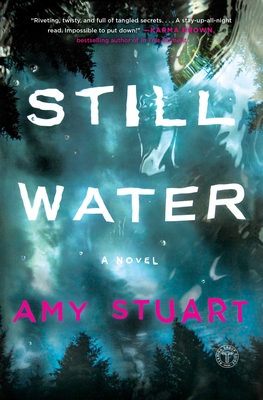 Scott Butki: How did this story develop?
Scott Butki: How did this story develop?
Amy Stuart: Still Water is a “sequel of sorts” to my first novel, Still Mine. A couple of the characters continue on in the second book, so to some degree the story developed out of the ending of the first book. I wrote Still Water with enough backstory in place so readers could start it without reading my first novel beforehand. The idea behind Still Water was to create a second missing person case that my protagonist, Clare, could tackle now that she’s got a little more experience under her belt.
Scott: Which came first, the plot or the characters?
Amy: Because this is a second book, the characters arrived on the page before the plot did. I had a general sense of where I wanted to take them, but the characters played a large part in shaping what happened in this book. As a writer it’s a very interesting experience to start a new novel with some familiar faces on hand; to some degree, you are forced to let them guide you through the story. I loved that.
Scott: Should readers read the first book in your series before this one?
Amy: Not necessarily! I’ve heard from lots of readers who read the books in order, and others who read Still Water as a standalone, and still others who read Still Water first then returned to read the first book as a sequel. I’m not about to tell readers how to best enjoy the books and I’m thrilled that they’ve found different ways to do so. That’s a writer’s dream.
Scott: How would you summarize the plot and the main characters?
Amy: Still Water follows Clare as she arrives in a place called High River to search for a woman – Sally Proulx – and her son who’ve gone missing. Clare immerses herself in the town, posing as a friend of Sally’s, but what the people of High River don’t know is that Clare works for a man named Malcolm Boon and this is her missing person second case. What Clare doesn’t know is that Sally’s disappearance is tied to High River’s long and dark history and that everyone she’ll meet is somehow involved.
Scott: The book involves, among other things, lots of secrets, including women on the run from abusive husbands. How did you go about researching things for this book?
/https://www.thestar.com/content/dam/thestar/entertainment/books/2018/06/01/this-weeks-top-book-reviews/amy_stuart.jpg) Amy: The most important thing for me in writing a novel like this is to authenticate the characters and their life stories and to make their reactions and personalities complex enough for readers to really get what they’ve been though. To research, I try to read a lot of case stories and firsthand accounts from women with similar experiences. I think when you’re taking on difficult issues in a book, you have a responsibility to get it as right as you can.
Amy: The most important thing for me in writing a novel like this is to authenticate the characters and their life stories and to make their reactions and personalities complex enough for readers to really get what they’ve been though. To research, I try to read a lot of case stories and firsthand accounts from women with similar experiences. I think when you’re taking on difficult issues in a book, you have a responsibility to get it as right as you can.
Scott: How does being an English teacher at an alternative high school help (or hurt) your work as a writer?
Amy: I’ve always found teaching to be a great antidote to writing; whereas writing is very solitary and inward, teaching is the exact opposite – social, outward. It’s such an honor to be able to convey my love for reading and writing to young people. But as my books move out into the world, I’ve found it harder and harder to strike the balance between two careers, so I’ve been moving away from full-time teaching. I can’t imagine a future where I’m not teaching in some capacity, though. I feel lucky to have true great passions in teaching and writing.
Scott: What do you want readers to take away from this story?
Amy: It means a lot to me that readers can see my characters grow and change over the course of a book, but that their growth feels authentic and plausible. I want my readers to feel that even the most flawed characters deserve redemption. I hope that my readers see how much I invested in my characters and the story when I was writing it.
Scott: Was it a coincidence, this coming out during the #MeToo movement, or did that movement play a role in your writing this book?
Amy: I was writing this novel just as the #MeToo movement was taking shape, so it was definitely in my head as the words were hitting the page. It felt particularly important to me to give the women characters a voice and the chance to emerge from their hardships with strength and resilience. I don’t see my novels as a form of social commentary, but I do want them to reflect my view of the world.
Scott: What are you working on next?
Amy: I’m back with Clare and Malcolm working on the next book in the series. Furiously! I can’t wait to see where they go next.
Joe Lansdale has written several short horror stories featuring Dana Roberts, an investigator in the supernatural. Later on his daughter Kasey joined him on the stories that have Dana team up with her character, Jana. They recently released a collection of all the stories, plus a new one in Terror Is Our Business. Joe and Kasey will be at BookPeople August 23rd at 7pm to discuss and sign the book. We got to ask them a few questions early about working on the stories and together.

MysteryPeople Scott: How did the character Dana Roberts come about?
Joe Lansdale: I was reading some old style ghost stories, and stories involving psychic detectives like Carnaki, Jules De Grandin, John Silence, thinking about The Nightstalker TV show, and I thought, you know, I’d like to write something like that, but in the older more “sober” tradition, as that wasn’t commonly in my wheelhouse, so I wrote a couple stories about a modern supernatural detective, she calls herself a detective of the Supernormal, meaning that she believes all things have a rational and scientific answer, even if we don’t know what it is yet. She’s a bit stiff as a character, in the old tradition, and I liked her quite a bit. I think both of the original stories were picked up for Best Horror of the Year, and I thought, okay, that’s it. But I had the urge to write a couple more, and did, one for an anthology Kasey edited titled Impossible Monsters. Later on, Kasey and I wrote a story together for a Chris Golden anthology, and Jana was born. She didn’t have a connection to Dana, but later we decided to put the two together. And truthfully, that overly sober Dana was wearing me out. I wanted some spice. Dana had that. She was a lot like Kasey, and Kasey came from a horror background, but like me, her interest are broader, and in fact, she was more excited by what is often called Women’s Fiction. I hate the term Chick Lit, as that designates the origin of the usage, which is that women are like hens, running around without design or purpose. But hey, there it is. We blended the ideas, with Kasey taking the helm and me pulling up the sails on that ship.
MPS: How did the stories change when Jana appeared on the scene?
Joe: They got funnier, more irreverent, less serious, at least from Jana’s viewpoint they were. They were still the same sort of stories, but Jana became the narrator. I think it made Dana more interesting to have Jana observe her and comment on her. Dana is the master, and Jana is sort of the sorcerer’s apprentice.
 Kasey: When Jana came in the picture, it felt like a natural transition, closer to the way dad and myself usually see things. Darkly humorous. It seemed like Jana’s existence allowed Dana to lighten up some, and find a middle ground with one another like real relationships of any sort do.
Kasey: When Jana came in the picture, it felt like a natural transition, closer to the way dad and myself usually see things. Darkly humorous. It seemed like Jana’s existence allowed Dana to lighten up some, and find a middle ground with one another like real relationships of any sort do.
MPS: What do you think each of you bring to the stories?
Kasey: I think the female prospective has always been something my father is good at, but it was fun focusing on things that were from my point of view, in my current consciousness in certain instances. I think Jana allowed the humor to come in a little more since Dana was written intentionally stiff.
Joe: One brings knowledge, the other brings enthusiasm.
MPS: Are there any particular authors who influenced the stories?
Joe: I mentioned my influences for this type of story in the first question, but to pin it more, William Hope Hodgson, Algernon Blackwood, Seabury Quinn, and Richard Matheson’s original Night Stalker script, which established the character. There were others here and there.
Kasey: For me there wasn’t a particular author I was channeling, more the character of Jana kept calling for me to tell her own story. I felt very character driven with these stories.
MPS: These kinds of tales partly rely on an eerie mood. How do you approach that aspect of the writing?
Kasey: I think for me I just imagine the things that I find eerie. What are the things that make me uncomfortable and scared in a good way, and then try to channel that into the stories.
Joe: With me it’s something that has seeped into my bones since a child. I’ve read a lot of this stuff, and all manner of fiction. I learned by reading, absorbed it.
MPS: What makes them worth coming back to?
Joe: I did it out of nostalgia, but when I did, I began to learn lessons all over again. They’re more severely plotted than a lot of my work. The ones I did alone I didn’t plot out, but my internal knowledge of the stories plotted them as I wrote. When Kasey and I wrote together, we had some discussions, laid out some basic plot lines, thin, but directions. Otherwise, working together, we were riding our horses off in all directions at once. That doesn’t work too well.
Kasey: I think the relationship between the two characters is really the key. The juxtaposition of these two women is really what I am drawn to. I know women like both of the characters, and in some ways I am like both of them, though admittedly more like Jana. It’s about watching them both grow as individuals and as a team, and seeing how even very different people can come together for the greater good.
MPS: Do you see a novel length investigation for Dana and Jana?
Joe: We’ve discussed it. It may be in the cards.
Kasey: We definitely see more adventures for these two in the future. The response has been tremendous, and I enjoy getting to do work with my dad.
Alison Gaylin’s If I Die Tonight uses the thriller to examine how social media affects our lives. It shows different points of view when a teenager is sent into a coma from apparently stopping a car jacking involving a one hit wonder from the eighties, and how rumors moving at light speed effect the lives of those caught up in the situation as well as those investigating it. Alison was kind enough to talk about the book and life in the era of Twitter.
 MysteryPeople Scott: Social media plays a big part in If I Die Tonight. What did you want to explore with that subject?
MysteryPeople Scott: Social media plays a big part in If I Die Tonight. What did you want to explore with that subject?
Alison Gaylin: I’m really fascinated by social media as an unreliable narrator. In the book, the kids and the adults use it in this way – the grown-ups falsely glamorizing their lives on Facebook, the kids (and I suppose anonymous Reddit posters as well) using social media to spread rumors, lash out at each other, bully each other with untruths. I always say I like to write about things that scare me, and in this day and age, social media can be terrifying.
MPS: You have a teenage daughter. Do you think she will be formed in a different way than when we were teenagers by social media?
AG: Yes, I do. As I mention in the book, I feel like when I was a kid, we blasted music, clomped around in our Doc Martens, tied up the family phone and basically wore our heart on our sleeves. Our power was in making noise. This generation is about earbuds and sneakers and personal devices… They’re so much quieter and more secretive, which makes them harder to know, help, save.
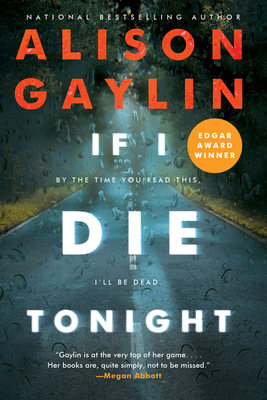 MPS: How much did having a daughter help you get the voices of the teenage characters?
MPS: How much did having a daughter help you get the voices of the teenage characters?
AG: It did help in terms of getting a grasp of teenagers’ concerns. And it was a story that my daughter told me – about a hit and run in a neighboring town – that gave me the initial idea for the book. She also helped me understand SnapChat, which was invaluable! But my daughter’s voice is very different from that of the two teenage boys in the book. She’s a lot more open than they are – thankfully!
MPS: This is one of those thrillers that probably wouldn’t have existed five years ago. Is there anything as an author you have to keep in mind when you’re writing a story so of its time?
AG: I think the one thing to keep in mind is to make sure that there is something timeless about the story. Yes, this novel has SnapChat and Reddit and Facebook Live in it. But it is ultimately about guilt, secrets, and the terrifying process of raising teenagers – all of which have been around forever.
MPS: If I Die Tonight is a something of an ensemble thriller told through the point of view of several characters. What made you decide this was the way to go for this story?
AG: When I first decided to write a story about a teenager who may have committed a carjacking/hit and run, my first thoughts were, “What if I were his mother?” “What if I were his little brother?” “What if I were the woman whose car was taken?” and “Who is going to solve this crime?” All seemed like valid ways to approach the story, so I decided to go with all of them.
MPS: Aimee Em is the third character you’ve recently used in a novel or short story tied to eighties pop culture. Has anything drawn you to this period?
AG: What is that thing they say about the songs you used to listen to as a teen making the biggest impact on you, emotionally? I am fanatical about pop culture – I always have been — and I think that having grown up in the early 80s, I’m especially obsessed with that time period.
Max Allan Collins is probably the crime fiction author who has had the most impact on me. In my teens I discovered his private eye Nate Heller and was hooked. In following his work, a real life character pops up through the years, famed Untouchable Eliot Ness. It came as little surprise he wrote a biography about the federal agent and his fight with Capone along with historian A. Brad Schwartz, Scarface and the Untouchable: Al Capone, Eliot Ness, and the Battle for Chicago. It was great honor to talk to one of my heroes about one of his.
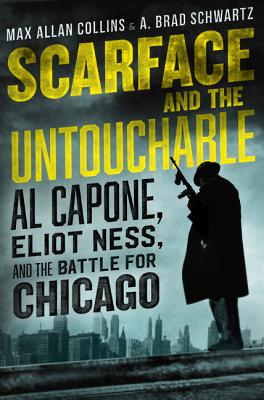 MysteryPeople Scott: You’ve used Eliot Ness in your fiction for over three decades and wrote and produced a play about him. What draws you to him?
MysteryPeople Scott: You’ve used Eliot Ness in your fiction for over three decades and wrote and produced a play about him. What draws you to him?
Max Allan Collins: As a kid I saw the original Desilu Playhouse production of “The Untouchables” with Robert Stack, which led to the TV series. I was a huge fan of the show and fascinated by the basis in history, although as we know the series played fast and loose. I was already a Dick Tracy fan, and Ness seemed to be a real-life Tracy. Years later I would discover that Tracy’s creator, Chester Gould, actually based Tracy on Ness and the Untouchables. My Nathan Heller private eye novels, which are fact-based and set in Chicago, seemed to cry out for Ness to be my PI’s police contact. After his appearances in the Heller series, Ness starred in four books I did about the Untouchable’s Cleveland years, as well as comics appearances in Road to Perdition and a Batman graphic novel, Scar of the Bat. I intended the play to be my last word on the subject…until my co-author came along.
MPS: Prohibition era Chicago is one of those places and times that are iconic in our history and captures our imagination, like 1870s Dodge City and San Francisco in the sixties. What is do you think the appeal is?
MAC: It was a specific time — like the Old West, it didn’t last long — and the misguided social experiment of Prohibition led to a wild period in which criminals often became anti-heroes and the public was largely in on the law-breaking, by way of ignoring the 18th amendment.
MPS: What the book reminded me is how young both Capone and Ness were when they started out. Do you think their youth helped define the kind of gangster and lawman they were?
MAC: I do, and that aspect of their combined story has always fascinated me — particularly since Hollywood traditionally cast much older actors in the roles. My co-author, A. Brad Schwartz — who is a Princeton history major in the doctorate program — is about the same age as Ness when he took Capone on.
MPS: Did you learn anything about the two in working on the book that surprised you?
MAC: The similarities were striking — immigrants with fathers who had made good, honest lives. But also there were the fun facts, like straight-arrow Ness lying about his age to land a federal job, and Capone and Ness living on the same Chicago street for many years.
MPS: There have been several books on Capone. Was their a certain way Mr. Schwartz and you wanted to approach him for yours?
MAC: Not to disparage all of the books, but many were weak or poorly researched, particularly where Eliot Ness is concerned. Authors seemed to love taking Ness down a bunch of pegs from the Hollywood version, but didn’t bother really digging into who and what this man really was.
MPS: Outside of Ness and Capone did you discover another person in the book you found fascinating?
MAC: Edward O’Hare, father of the war hero O’Hare Airport was named for, was a fascinating, shifty fixer, who has often been painted positively by historians when in fact he was a manipulative, slippery character.
MPS: Did you find anything that contradicted Eliot Ness’ memoir The Untouchables?
MAC: The memoir has been much criticized, yet a lot of it really happened. The co-author, sports writer Oscar Fraley, took great liberties by moving historical material around for dramatic effect. Things Ness did prior to the Untouchables — the Chicago Heights investigation, for example — were depicted by Fraley as happening after the formation of the Capone squad. Ness was at the end of his life, needing money desperately, and allowed the book to be essentially a non-fiction novel.
Since there’s a few more weeks left for summer reading, I thought it might not be a bad idea to share my top ten crime novels so far for 2018. Many of these books pushed the boundaries of the genre, showing that it is still growing and has places to go. I also know there is some great work that would be on this list if I read it yet, like May Cobb’s Big Woods or Sunburn by Laura Lippman. Still, I’ve read enough good stuff, I couldn’t just limit this list to ten.
 Give Me Your Hand by Megan Abbott – Abbott once again dives through the stylish surface of noir and hits its darkest depths, pushing its boundaries in this tale of science, female competition, and the burden of secrets.
Give Me Your Hand by Megan Abbott – Abbott once again dives through the stylish surface of noir and hits its darkest depths, pushing its boundaries in this tale of science, female competition, and the burden of secrets.
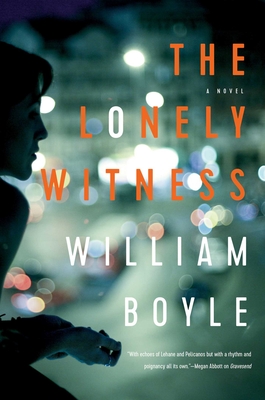 The Lonely Witness by William Boyle- Boyle shows his skill of examining lives of quiet desperation, then turning up the volume. A former party girl, now living a quiet life, flirts with her past ways when she witnesses a murder and trails the killer who ends up stalking her.
The Lonely Witness by William Boyle- Boyle shows his skill of examining lives of quiet desperation, then turning up the volume. A former party girl, now living a quiet life, flirts with her past ways when she witnesses a murder and trails the killer who ends up stalking her.
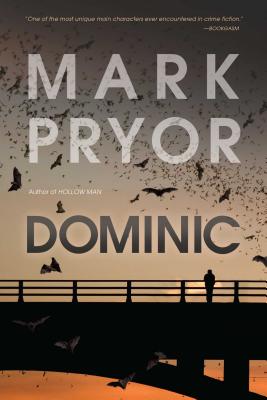 Dominic by Mark Pryor- Pryor brings back his Austin sociopath, tying up loose ends from Hollow Man. A great thriller that has you catching yourself rooting for the bad guy.
Dominic by Mark Pryor- Pryor brings back his Austin sociopath, tying up loose ends from Hollow Man. A great thriller that has you catching yourself rooting for the bad guy.
 If I Die Tonight by Alison Gaylin – A harrowing trip through the social media age with a suburban crime that causes rumors to get way out of control. Gaylin uses an ensemble of characters to show how one act can effect a community and the multiple points of view that fracture and event.
If I Die Tonight by Alison Gaylin – A harrowing trip through the social media age with a suburban crime that causes rumors to get way out of control. Gaylin uses an ensemble of characters to show how one act can effect a community and the multiple points of view that fracture and event.
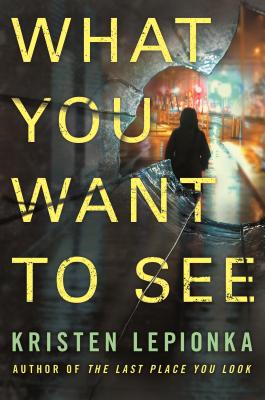 What You Want To See by Kristine Lepionka – Roxane weary returns for a second case, clearing a client for the murder of his fiance’, taking her into the dark world of real estate fraud. In just two books, Lepionka proves to know her detective, the craft of great plot, and the art of a great shoot out.
What You Want To See by Kristine Lepionka – Roxane weary returns for a second case, clearing a client for the murder of his fiance’, taking her into the dark world of real estate fraud. In just two books, Lepionka proves to know her detective, the craft of great plot, and the art of a great shoot out.
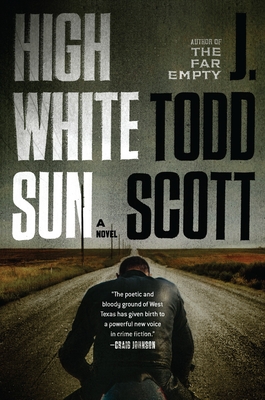 High White Sun by J. Todd Scott – In this follow up to The Far Empty the law of Big Bend County contends with an Aryan biker gang. Scott uses the Texas backdrop and history for one hell of an epic gritty crime novel.
High White Sun by J. Todd Scott – In this follow up to The Far Empty the law of Big Bend County contends with an Aryan biker gang. Scott uses the Texas backdrop and history for one hell of an epic gritty crime novel.
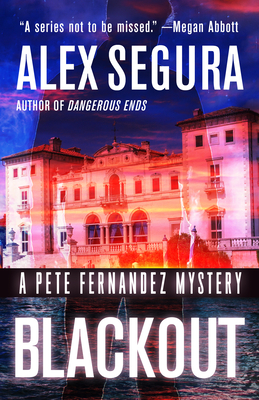 Blackout by Alex Segura & Potter’s Field by Rob Hart – Both of these authors take their troubled private detectives through great changes with cases that hold a mirror to their lives. Along with Lepionka, these two prove the future of the PI novel is in good hands.
Blackout by Alex Segura & Potter’s Field by Rob Hart – Both of these authors take their troubled private detectives through great changes with cases that hold a mirror to their lives. Along with Lepionka, these two prove the future of the PI novel is in good hands.
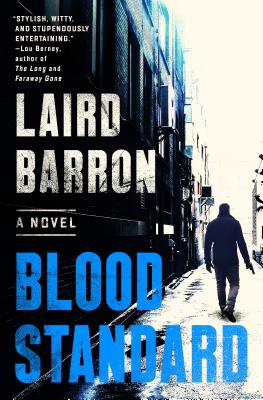 Blood Standard by Laird Barron- Mainly known for his horror writing, Barron introduces us to his hard boiled series character Isaiah Coleridge, a former enforcer on the outs with the mob. I can’t wait for the next book about this bad ass.
Blood Standard by Laird Barron- Mainly known for his horror writing, Barron introduces us to his hard boiled series character Isaiah Coleridge, a former enforcer on the outs with the mob. I can’t wait for the next book about this bad ass.
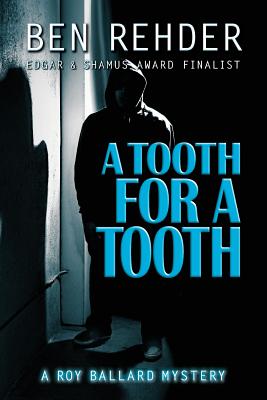 A Tooth For A Tooth by Ben Redher- The latest in the Roy Ballard series has the legal videographer on a fraudulent accident claim that turns out to reveal bigger crimes. A fun classic PI yarn with some fresh spins on the genre.
A Tooth For A Tooth by Ben Redher- The latest in the Roy Ballard series has the legal videographer on a fraudulent accident claim that turns out to reveal bigger crimes. A fun classic PI yarn with some fresh spins on the genre.
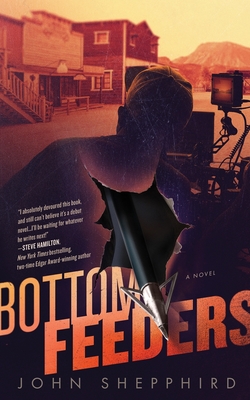 Bottom Feeders by John Shepphird – A fun fair play mystery with the cast and crew of a made for cable movie getting arrows shot into them. Shepphird, who has directed his share of cable movies, captures
Bottom Feeders by John Shepphird – A fun fair play mystery with the cast and crew of a made for cable movie getting arrows shot into them. Shepphird, who has directed his share of cable movies, captures
Our Pick Of The Month, The Line That Held Us, is David Joy’s third book to take place in his home of Jackson County, North Carolina. It concerns Calvin Hooper who helps his friend Darl Moody hide a body he accidentally shot. The body belongs to the brother of Dwayne Brewer, the county’s most vicious criminal. What occurs is a tense thriller that also looks at family, friendship, and search for grace in a place that is going through a lot of changes after it seems to have changed little for over a hundred years. We got a chance to talk about the book with David Joy himself.
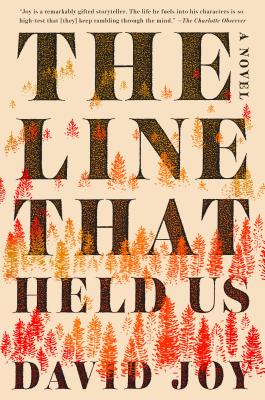 MysteryPeople Scott: As in all of your books, family plays a major part in the story. Dwayne is avenging his, and Calvin is trying to save his before it even gets started. What makes the dynamics rich subject matter for you?
MysteryPeople Scott: As in all of your books, family plays a major part in the story. Dwayne is avenging his, and Calvin is trying to save his before it even gets started. What makes the dynamics rich subject matter for you?
David Joy: Maybe more than anything it’s the idea of unconditional love that interests me. I think familial bonds, and deep-seated friendships that become familial, make for some of the richest ground to plow. People will do things that defy reason and that defy even their own morality to protect the ones they love. That’s an interesting place to put a character. There’s immediate conflict. There’s this “I know I shouldn’t do this but I’d do anything for you” kind of conflict. Any time you can create that kind of tension in a story you’re going to have movement, and that’s what a story has to do. It has to move.
MPS: Family seems to be a staple in Southern literature. Do you feel it has a special place in the culture?
DJ: That’s definitely true about Southern literature, but I think the reality is that it’s less a matter of the South or the North or the Midwest, and much more a matter of the rural nature of the setting. Family is an integral part of the rural identity. You could go anywhere in the country and if you get far enough out to places where people are largely isolated and seldom leave and that’s all you have is family or families. Take the county where I live, Jackson County, North Carolina. You go back to the late 1800s when that county was formed and the names on that paper the Brysons and Hoopers and McKees and Dills and Fowlers and McCalls and Shulers and Greens and all these names, those names are the same names that are here now. That’s the culture and place that I’m writing about. The work mirrors that reality.
MPS: Dwayne is such a great antagonist, in fact as the book continues he grows more into a counter-protagonist if there is such a thing. Is there any thing you have to keep in mind when writing for a character like him?

DJ: I think one of the scariest things that can happen with a “bad guy” is when they make perfect sense. When, as a reader, you find yourself nodding your head. There’s this great moment in Larry Brown’s novel Father And Son when one of the main characters, Glen, catches this giant fish that everyone had been trying to catch for years. Glen is a bad dude. He’s come out of prison for killing someone. He’s raped at least one woman that we know of. Anyway, he catches this huge fish and he has this moment where he could take it to town and show it off and for once in his life be a hero. Instead, he turns it loose. When they ask him why, the line is something like, “Because that fish never done nothing to me.” Tom Franklin asked Larry about that scene once and he said Larry told him that even the worst people had moments of humanity. I think that’s absolutely right and I think that’s what you’re getting at here. With Dwayne Brewer, I wanted his logic to make sense. I wanted readers to see him doing incredibly horrific things and somehow feel empathy toward those actions. He’s some sort of balance between instinct and reason, between what we feel in our guts and what we think in our heads. At times, we all wash back and forth between those places and that’s part of why characters like that resonate with us. I think he might be the character I’m most proud of. If nothing else, he’s unforgettable.
MPS: In some ways Calvin is even more difficult to pull off. He’s comes off as the friend you want to have and workmate you respect, but I never felt like we had to like or side with him. Is there a way you approach someone like that?
DJ: Calvin Hooper is really an indifferent character altogether, and maybe that’s what you were responding to. He never struck me as a decision maker, as a leader. He reminds me of friends of mine who always wound up in the back of the car riding along to places they had no business going, with people they had no business being with. There were times, especially when I was younger, when I did the same thing. There were times I wound up in the back of a police car because I went along with something someone else wanted to do. Early on in the novel Calvin makes some pretty horrible decisions based on his love and commitment to his best friend, Darl Moody. After those decisions backfire and things go from bad to worse, there’s this sort of detached reaction toward everything. It’s like he just sort of removes himself and thinks if I just leave everything alone maybe it will settle. Well, of course things don’t settle and one of the biggest conflicts in the book is Dwayne Brewer forcing Calvin to acknowledge what he values most and to make a decision based on that acknowledgement. In that way, I think Calvin shows a lot of growth as a character. There’s that question Dwayne asks Calvin toward the end of the book, he asks, “For whom are you willing to lay down your life, friend? Outside of that there is nothing.” I think that question lies at the heart of what this novel is about.
MPS: It seems like with each book, the outside world is closing in tighter on your character’s communities, posing the same cultural threat to the area as gentrification does to cities. Do you see this as an ever-growing problem in real life?
DJ: When a lot of outsiders think about Appalachia, they imagine the coalfields of eastern Kentucky and West Virginia. Where I live, that’s not our reality. I’ve said for a long time that unrestricted land development, tourism, rising land costs, and the resulting gentrification, that’s our coal mining. A lot of people refuse to acknowledge tourism as an extractive economy, but it is. It’s not as ugly on the surface as the timber industry was a century ago, or as coal mining was and is, but the result is the same. The result is the destruction of landscape and the displacement of people.
The jobs that are created from tourism-based economies are low paying jobs. What value there is is in the land. There are places here, entire coves, entire mountains, that have belonged to single families for hundreds of years. That land has been divvied up and divided over generations and nowadays its worth more than it ever has been. The thing about that value though is that it forces the hand. Sure you can sell the property to some out-of-state goon looking to build a second or third home that they can come visit for a few weeks out of the year and sure the money you’re going to make on that acreage is more than you’ve ever had in your life, but there’s no lateral move. You can sell the farm but it’s not like you can drive down the road and scoop up another. There’s no other place to go. Those places don’t exist anymore. The family land is broken up and sold and the local people move away. I think we’re looking at the very last remnants of this culture and these people. We’re within a generation of their extinction.
MPS: All three of your books are stand alone novels. Are there any plans for a series, trilogy, or return to any of your surviving characters?
DJ: I’d never even heard that term “stand alone” until I had a book out. I don’t know, I’d just never really thought about books like that. I didn’t grow up reading series. I typically don’t want to stick with characters that long. I like to jump around. I might read something Southern then jump into something South American. Sometimes I’ll read nothing but poetry for months. I won’t say I’d never write something like a trilogy, but the story would really have to warrant the structure. Other than that, my style lends itself more to individual books.
As far as my novels, I do like to throw anecdotes from earlier books into new ones, things that work whether you’ve read the other books or not. So for instance with The Weight Of This World, the time period when that book is set and what’s happening with the methamphetamine culture is largely resulting from the end of the first novel, Where All Light Tends To Go. With The Line That Held Us there’s mention of an event that happened in Weight Of This World. There’s also a lawyer that shows up in Where All Light Tends To Go and The Line That Held Us. The book I’m working on, one of the main characters from The Weight Of This World appears and I don’t know whether that will stick or not, but the point is that I do enjoy playing with things like that.
All of my books are set very specifically in Jackson County, North Carolina where I live and it’s a small place. You get to know people here. It’s the same names in the newspaper week in and week out. When things happen, you hear about them, and when things happen, especially big things, the stories root themselves into the landscape. Nothing is easily forgotten here and I want my books to mimic that reality.